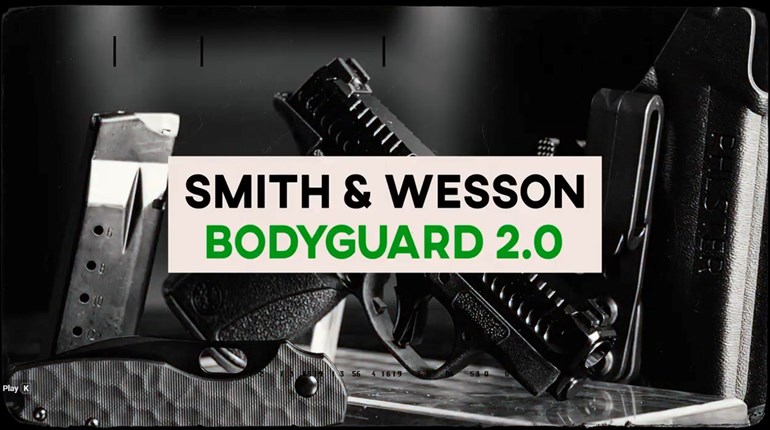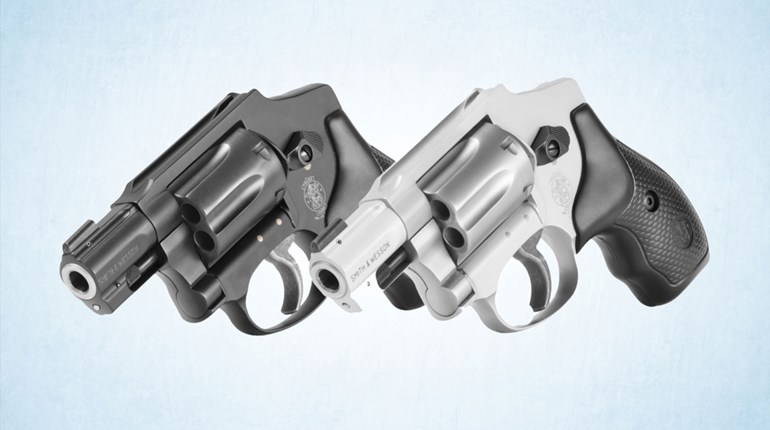
In the mid 2000s, Uncle Sam decided he wanted a new pistol for the military. Several big players—SIG, HK, Glock and Beretta to name a few—came up with designs. Unfortunately for everybody, the solicitation was first scaled back, then scrapped.
But that doesn’t mean the folks in Springfield, Mass., went idle. A new striker-fired pistol, with a reprise of the “M&P” (Military and Police) moniker of a century before, was born in 2005. Since then, this pistol has taken the plastic/polymer handgun market by storm, and for good reason. The C.O.R.E. versions (Competition Optics Ready Equipment) appeared in 2012, and are available with ported and non-ported barrels in long (5-inch) slide or standard (4.25-inch) lengths. Calibers are either .40 S&W or 9 mm.
Compact red-dot optical sights have come a long way in both size and ruggedness/reliability since the Tasco Optima, one of the first micro-sized sights. Long on compromises, these early optics have been replaced with the robust likes of the Trijicon RMR, Leupold Delta Point, J-Point, DOCTER®, C-More STS and EOTech/Insight MRDS. All of which, conveniently, fit the C.O.R.E. For our tests, we used the EOTech.
The M&P test version we have is a non-ported, long slide chambered in 9 mm. Like all the M&Ps, ours came with a choice of three backstraps. We tested all three. Though the medium was the most comfortable, it didn’t give the best shooting results. Trigger actuation was slightly quicker, but accuracy suffered. The large backstrap produced the best precision downrange. Tackiness of the grip is also better in the recent-issue C.O.R.E.s.
The MRDS is a very solid and rugged optic. It runs on a small coin battery that you can change without removing the scope—a real help in preserving your “zero.” The dot is bright and easy to find. Whenever I had a hard time finding the dot, I simply lined up the tall iron sights in co-witness, and that got me going again. Though dot failure is pretty rare these days, the conventional sights are a nice backup, and a “must” on a duty pistol.Of all the plastic/polymer wonder-nines, the M&Ps are my favorite.
The dot on the EOTech was small (3.5 MOA) for my tastes. The dot intensity auto-adjusts based on how bright it is around you, but a manual override is (wisely) available. That is a huge plus in my book: My eyeballs might not agree with a computer chip on how bright is bright enough. The sight adjustments were actually clicks, too, and not just mush as so many seem to be. They’re not Schmidt & Bender-type clicks, mind you, but still very positive.
Range work started off sandbags and I was easily able to put five shots inside three inches at 25 yards. Shooting a dot is a different thing compared to iron sights. With irons, the front sight should be crystal clear and the target fuzzy. With a dot, it’s almost the opposite. I try to focus on the target and float the dot to where I want the shot to go. A smaller dot allows me to be more precise. The 3.5 MOA dot turned out to be a good compromise for speed and accuracy.
A few drills were next. Normally a scoped pistol would require a special holster, but the slide-mounted optic meant I could use my Blade-Tech. The light weight of the M&P C.O.R.E. caught me off guard for the first several draws, especially after shooting nothing but heavy revolvers for the past two years. It took a little while to stop over-swinging the M&P, but I was back to my normal first-shot times of around 1 second on a 7-10 yard IPSC target with “A” hits. Most of my misses tended to go high, as I was not settling into the gun and rushing to get off a shot. 1.1-1.3 sec hits on 8-inch plates at 10 yards were pretty normal before long.
Setting up a short stage that required movement is where the C.O.R.E. really showed me how a lighter pistol shines compared to a heavy pistol. Swinging the C.O.R.E. from target to target was effortless—both smooth and fast. My times switching from target to target were noticeably reduced, and coming to a stop on a hard-focus shot was much easier.
None of that is a free lunch, however. When the shot broke there was a lot more dot movement than I was expecting. When the mag was full and all that weight was down low in the grip, I was able to track the dot during recoil. Once the mag was low (or I was holding the M&P like a sissy), I would lose the dot.
Trying to figure out how to keep the dot in the window all through recoil led me to play with some other bullet weights. Snappy 115-grain factory ammo was sharp-recoiling, but the dot was almost always visible (and reminded me why I don’t like 115s in 9x19). Yuck. Moving to the heavyweight 147-grain bullets, the dot was easier to track as it seemed to be moving more slowly. I also tried some 165-grain revolver loads (outstanding in my S&W 929 revolver). While they were the softest recoiling of the bunch, the dot was very difficult to track.
This experiment led me to conclude that if I really wanted to see the dot at all times while shooting, I might want some sort of porting. Conveniently, this is an option with several S&W UPCs.
As much “because I could” as any other reason, I substituted my personal KKM barrel and AAC suppressor for the stock barrel. Shooting steel targets with the 147- and 16-grain ammo was a hoot. Shooting a pistol with a can attached has a bit of a pogo-stick feel that complicates holding that dot on target somewhat. All the same, waiting for the sound of a hit on a 200-yard steel to get back to you is just too cool. Sue me.
For the guys shooting Open Division 3-gun, the C.O.R.E. is a perfect gun. With extended mag pads you can get 23 to 24 rounds in the gun, plus you’ll never worry about external safeties when abandoning it during a weapons transition.
To be completely fair, I had also brought along my scoped Glock 17L to be sure I was not being too much of a “I always like all new guns” kind of a shooter. The shape and feel of this M&P C.O.R.E. is better in my hand and not as blocky as my Glocks. The recoil felt the same because the pistols weigh about the same. The way the sear and strikers are set up lend themselves to a better trigger than you can get out of a Glock or many other striker-fired pistols.
Of all the plastic/polymer wonder-nines, the M&Ps are my favorite. The C.O.R.E. makes this “favorite” status easy to defend, as you can put a variety of optics on without paying a gunsmith a bunch of money to machine and drill/tap holes, and then still have to install sights tall enough to use with a can or in case of optic failure—however unlikely.
Another standout thing is the M&P trigger. It has one weight, one feel, all the time—no double action to single action transitions and the tough learning curve that creates. With a little stoning and new springs (don’t be shy about getting a gunsmith’s help here, however), the triggers can become astonishingly good. Combined with the low bore axis, the M&P becomes one of the best go-fast pistols around.
For anyone with aging eyes, there’s another dimension to the C.O.R.E. pistols: Even if you don’t want a “dotted” pistol, just settle in behind the irons. Down the road, you’ll be glad you have the option. Options are good.





































